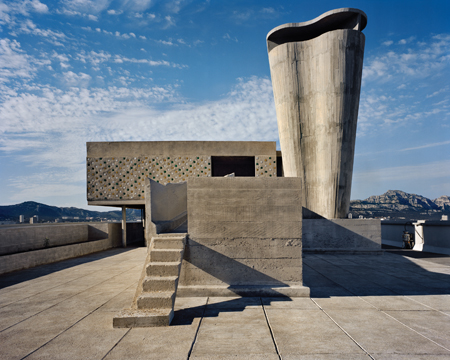Now read this: Architecture books we need in 2013

What makes architects work better?
It can be argued that we learn in two complementary ways: by building on the past, and by projecting ourselves into a theoretical future. Sometimes, these methods are one and the same, as a few new books coming out in 2013 show.
Some of these new titles are recommended because they turn to architectural greats from past centuries to remind us of things we should already know. Others lay out our present challenges and envisage a idealized future.

All are likely to push architects further -- and smarter.
1. Make better cities.
Two viewpoints dominate the current city polemic: One is described by Winy Maas and Felix Madrazo in the forthcoming City Shock (nai010 publishers), and it's pure FEAR. Irrational worries about change, disaster and unknown social forces are guiding urban planning, the authors contend -- for the worse.
A more optimistic vision comes from Vishaan Chakrabarti, who points out that American cities today are growing faster today than the suburbs -- for the first time since the 1920s. He also says that they are the key to solving many of America's most entrenched challenges.
As director of Columbia University’s Center for Urban Real Estate (CURE), Chakrabarti has argued that we need better-designed cities to combat many current ills, including overconsumption, rising health costs and an anemic economy, among many others. The future? Our cities have more "trains, towers and trees."
In April, we'll be snapping up A Country of Cities, Chakrabarti's new tome published by the ever-thoughtful Metropolis Books, with a foreword by Norman Foster. As the former Senator Bill Bradley says, Chakrabarti "argues convincingly how the country would benefit economically and environmentally if the suburbs started to move back to the cities," with viable policy ideas to make it happen.
Also on the theme is a brilliant wish-list crafted by co-authors (and co-curators) Sam Lubell and Greg Goldin: Never Built Los Angeles, full of schemes and ideas by architects who saw potential in mass transit, master plans, and truly visionary buildings. From the ample parks of the Olmsted 1930 L.A. regional plan to Jean Nouvel’s 2008 vegetated Green Blade tower, the book (also from Metropolis Books) catalogues 100 compelling ideas, many that will shock those who know Los Angeles. They recruited Thom Mayne to pen a forward.
The authors also are curating the upcoming exhibition in March at the A+D Museum Los Angeles. Perhaps we'll see more never-built city books in the future. (Never-built Toledo, anyone?) I certainly hope so.
2. Learn from the masters.
In meeting today's toughest design challenges, we're forgetting where we came from. It's time to revisit the true innovators: Start by marking your calendars for June, when the Museum of Modern Art in New York presents "the largest exhibition ever" on Le Corbusier’s six decades of astounding work.
After the show, begin your field work with the accompanying book. Structured as an atlas, the pages help architects uncover the major sites and cities where Le Corbusier worked.
The book timing comes at the 25th anniversary since the Centre Pompidou released the seminal catalogue Le Corbusier, une encyclopédie. This new title, Le Corbusier: An Atlas of Modern Landscapes, has essays by some of the best thinkers, too: Tony Vidler, Barry Bergdoll, and 20 european critics and academics.
3. Dig deeper for better ideas.
There are many more books on the great design thinkers coming in 2013, and a few of them will not only edify but also surprise.
As architects, we're often out of touch with some of the best lessons of our forebears, including the structural and design experiments of the nineteenth century. An example, which SmartPlanet's The Take covered last month, is the modern library, which rarely lives up to the great reading rooms of yore.
To the point, have you studied Henri Labrouste? (I see a few empty gazes out there.)
You can head to Paris to see his majestic reading rooms, built of iron and glass, or you can pick Henri Labrouste: Structure Brought to Light, also by MoMA. The use of material and daylight stands up to today's best, and even more so, Labrouste gave shape to the kind of collective civic spaces that we need more of today.
Labrouste is an antidote to Le Corbusier, but we need both for a successful future.
There's much more coming out in 2013, but these few titles will be on my bookshelf in the coming months. And I'll be looking forward to hearing from practitioners who are working to bring these valuable lessons to life.
What are you reading in 2013?
This post was originally published on Smartplanet.com